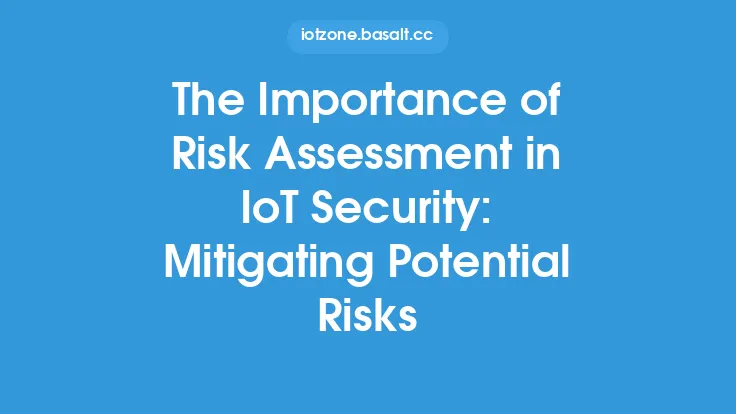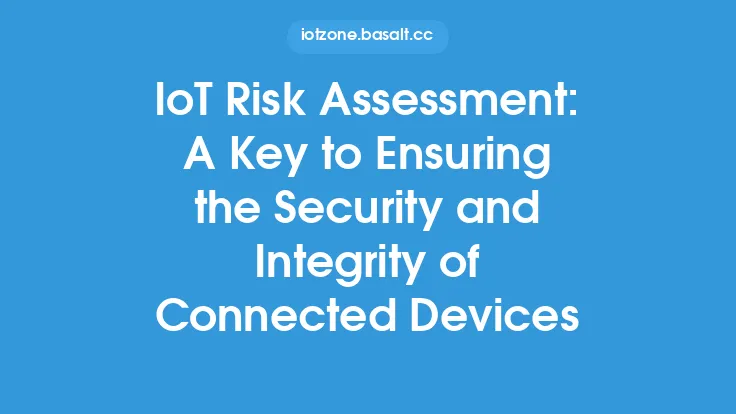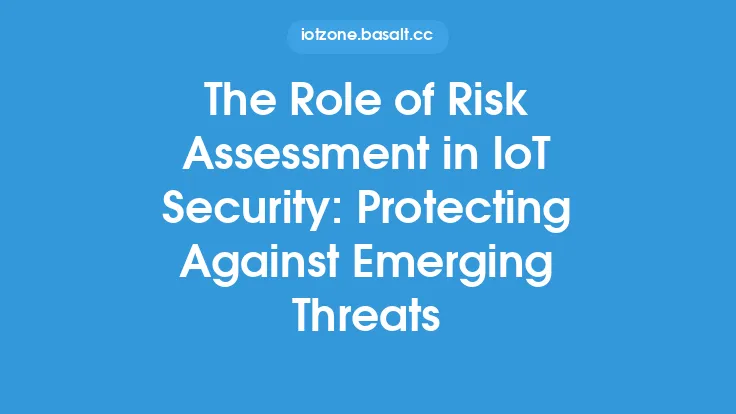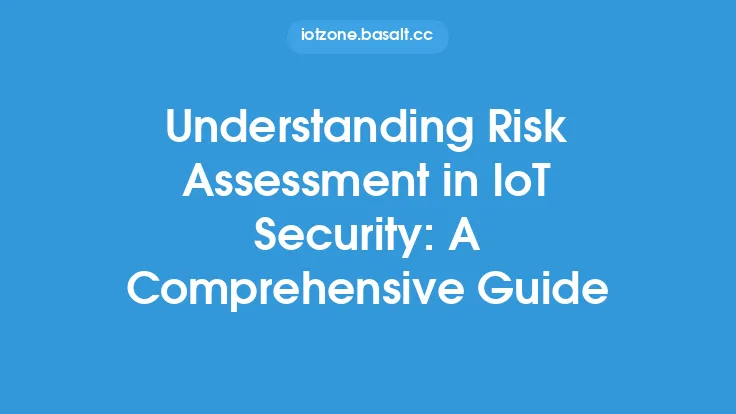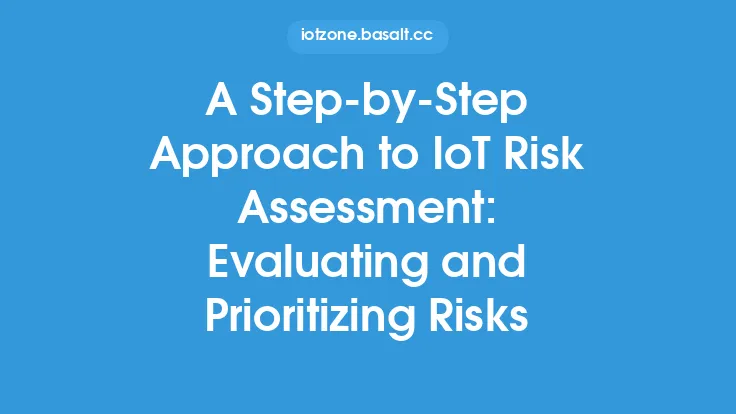The increasing number of IoT devices connected to the internet has created a vast attack surface, making it challenging for organizations to identify and mitigate potential threats. A risk assessment framework is essential to evaluate the security posture of IoT devices and identify vulnerabilities that could be exploited by attackers. In this article, we will discuss the key components of a risk assessment framework for IoT devices, including threat identification, vulnerability assessment, risk analysis, and mitigation strategies.
Introduction to Risk Assessment Frameworks
A risk assessment framework is a structured approach to identifying, analyzing, and prioritizing potential risks to IoT devices. It involves a systematic evaluation of the device's security controls, threat landscape, and vulnerabilities to determine the likelihood and potential impact of a security breach. The framework should be tailored to the specific IoT device or system, taking into account its unique characteristics, functionality, and operating environment.
Threat Identification
Threat identification is the first step in the risk assessment framework. It involves identifying potential threats to the IoT device, including malicious actors, accidental events, and environmental factors. Threats can be categorized into several types, including:
- Network-based threats: These include attacks on the device's network interface, such as denial-of-service (DoS) attacks, man-in-the-middle (MitM) attacks, and network scanning.
- Device-based threats: These include attacks on the device itself, such as buffer overflow attacks, code injection attacks, and firmware modification.
- Data-based threats: These include attacks on the data transmitted or stored by the device, such as data tampering, eavesdropping, and data breaches.
- Physical threats: These include physical attacks on the device, such as tampering, theft, and vandalism.
Vulnerability Assessment
Vulnerability assessment is the process of identifying and evaluating vulnerabilities in the IoT device. Vulnerabilities can be categorized into several types, including:
- Software vulnerabilities: These include vulnerabilities in the device's operating system, firmware, and applications.
- Hardware vulnerabilities: These include vulnerabilities in the device's hardware components, such as microcontrollers, sensors, and actuators.
- Configuration vulnerabilities: These include vulnerabilities in the device's configuration, such as weak passwords, open ports, and misconfigured firewalls.
- Protocol vulnerabilities: These include vulnerabilities in the communication protocols used by the device, such as Bluetooth, Wi-Fi, and Zigbee.
Risk Analysis
Risk analysis is the process of evaluating the likelihood and potential impact of a security breach. It involves assessing the probability of a threat exploiting a vulnerability and the potential consequences of a security breach. Risk analysis can be performed using various methodologies, including:
- Qualitative risk analysis: This involves evaluating the risk based on non-numerical values, such as high, medium, or low.
- Quantitative risk analysis: This involves evaluating the risk based on numerical values, such as probability and impact.
- Hybrid risk analysis: This involves combining qualitative and quantitative risk analysis methodologies.
Mitigation Strategies
Mitigation strategies are measures taken to reduce the likelihood or impact of a security breach. They can be categorized into several types, including:
- Preventive controls: These include measures taken to prevent a security breach, such as firewalls, intrusion detection systems, and encryption.
- Detective controls: These include measures taken to detect a security breach, such as logging, monitoring, and incident response.
- Corrective controls: These include measures taken to correct a security breach, such as patching, updating, and restoring systems.
- Compensating controls: These include measures taken to compensate for a security breach, such as backup and recovery, and business continuity planning.
Implementation and Maintenance
Implementing and maintaining a risk assessment framework for IoT devices requires a structured approach. It involves:
- Establishing a risk management team: This includes assigning roles and responsibilities to team members, such as risk assessors, vulnerability assessors, and mitigation strategists.
- Conducting regular risk assessments: This includes performing risk assessments on a regular basis, such as quarterly or annually, to identify and mitigate new risks.
- Maintaining documentation: This includes maintaining documentation of the risk assessment framework, including threat identification, vulnerability assessment, risk analysis, and mitigation strategies.
- Continuously monitoring and evaluating: This includes continuously monitoring and evaluating the risk assessment framework to ensure its effectiveness and identify areas for improvement.
Technical Considerations
From a technical perspective, implementing a risk assessment framework for IoT devices requires consideration of several factors, including:
- Device architecture: This includes understanding the device's architecture, including its hardware and software components, and communication protocols.
- Network architecture: This includes understanding the network architecture, including the device's network interface, network topology, and communication protocols.
- Data storage and transmission: This includes understanding how data is stored and transmitted by the device, including data encryption, authentication, and access control.
- Security protocols: This includes understanding the security protocols used by the device, including secure communication protocols, such as TLS and DTLS, and secure data storage protocols, such as encryption and access control.
Conclusion
In conclusion, a risk assessment framework is essential for identifying and mitigating potential threats to IoT devices. It involves a structured approach to threat identification, vulnerability assessment, risk analysis, and mitigation strategies. By implementing and maintaining a risk assessment framework, organizations can ensure the security and integrity of their IoT devices and protect against emerging threats. The framework should be tailored to the specific IoT device or system, taking into account its unique characteristics, functionality, and operating environment.

